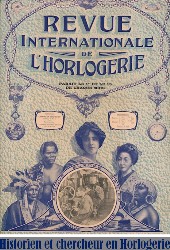-
alexandrom.
User deleted
Ciao a tutti ,
ecco una breve storia dei cronogarfi russi .
Lineage of the Poljot 3133 & 3017
The story of Poljot chronographs is a long and rather complicated one. Information is hard to come by and often in other languages. Translations are not always perfect, leaving gaps to be filled in by ones own logic. So before we begin this investigation, please recognize that this is a work in progress and there is bound to be a few factual errors.
The lineage of both Poljot Chronograph movements can be traced back to the Swiss Venus cal. 150.
The Venus 150 is a traditional castle wheel chronograph. The beat rate is 18,000 A/h and has 17 jewels. The chronograph register is probably 45 minutes (see Notes). Size is 13 lignes. Although I was not able to pin down exact production dates, there are historical notes of this caliber being used before WWII and up until the 1960's.
The Venus caliber's directly derived from the base cal. 150 are the 152, 175, and 178. Unlike Valjoux, there are almost no noticeable variation in physical construction. The major difference is size and the presence or absence of the hour register. The 150 & 152 are 13 lignes; the 175 & 178 are 14 lignes. The 150 & 175 have no hour register whereas the 152 & 178 have one.
Beginning in 1959, 1MWF began producing the 3017 castle wheel chronograph. The beat rate is 18,000 A/h and has 19 jewels. It has a single 45 minute chronograph register. The size is 13 lignes. The size is particularly important to note as it eliminates the Venus 175 as a possible base. The 178 is also eliminated because in addition to being too big, it also has the additional (hour) register. The 152, though being the correct size, has the additional register as well. This leave only one possibility, the Venus cal. 150.
Around 1966, Venus offered Poljot the tooling and license for their cal. 175. They refused this offer, however, because they had already been producing the practically identical cal. 150 for seven years.
At date unknown, Venus converted their cal. 175 from castle wheel to cam. This movement was designated the cal. 188. The new movement was 14 lignes, had a 18,000 A/h rate and possessed 17 jewels.
This Venus movement would then go on to form the base for the Valjoux cal. 7730. The cal. 188 is the first movement to show a vary particular style of chronograph activation levers. This style is then repeated in the Valjoux 7730. Beginning with the 7733, the levers retain their characteristic base but split midway. Many older Poljot 3133 have the identical split activation levers. The 7734, however, has a single, wide lever. The same Venus 188 style base, however, is retained. From this point onward, all the movements are 14 lignes.
In 1973, the quartz crisis was in full swing. Movements manufactures were dropping left and right. Valjoux, in an attempt to compete, developed the cal. 7750. This was an automatic winding chronograph. Hard pressed to increase cash flow, they discontinued scores of movements intending to replace them with the new 7750. Desperate to unload the tooling of the late 7730, they offered it to Poljot. Their offer was refused. It seems Poljot didn't want the low yielding, ancient 7730 equipment. (It was later sold to an Indian firm.)
The following year, 1974, Valjoux discontinued their 7734 as well. Once again, desperate to unload the tooling they turn to Poljot. This time they accept. It has been suggested that out of work Venus technicians were actually dispatched to Moscow to help with the hand over. Unfortunately, it is impossible to determine the validity of this.
Poljot made several modifications to the movement. The most noticeable are the new balance wheel and the addition of six jewels, bringing it up to 23. It is also interesting to note that several of the jewels are functional on both sides -- acting as two jewels. This brings the theoretical jewel count up to around 31. Variations are also readily observable in the chronograph activation levers. It should be noted, however, that the base of the levers is identical to those on the Venus cal. 188. Other modifications include the 31659 hacking variant produced in small quantities beginning in 1976. The Poljot cal. 3133 was not made available to the general public until 1983. Since then, the P3133 has had several complication variants (31679, 31682). The P3133 sans chronograph unit is also currently marketed as the P3105(see Notes).
In summation, I'd like to kindly refer your attention to the scan below.
Notes:
- The photograph I saw of a Venus cal. 150 watch had a 45 minute dial but a description classifying it as a 30 minute chronograph.
- The official web page of 1MWF, poljot.ru, lists the 17 jewel clockwork portion of the 3133 as 2614. This, however, contradicts their own nomenclature.
This one is from:
http://www.watchuseek.com/cgi-bin/anyboard...&cmd=rA&cG=2535. -
.

Forum Divinity












- Group
- Member
- Posts
- 21,362
- Location
- Confoederatio Helvetica VS-VD et De Finibus Terrae (Bassa Terronia Orientale) - S.M. Leuca -
- Joined
- 29/2/2008
- Status
- Anonymous
Vedo solo ora e mi meraviglio che nessuno abbia ringraziato!
Dopo 6 anni... grazie Alex!!!. -
.
 Grazie ....
Grazie .... 
Giuliano. -
Équation_du_temps.
User deleted
Grazie per il post.  .
. -
.
Anche se con un ritardo notevole... Grazie!  .
.
breve storia del cronografo russo: Venus , Valjoux , Poljot |





 Contacts
Contacts Instagram
Instagram Facebook
Facebook YouTube
YouTube Iscritti
Iscritti